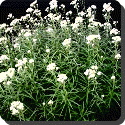 Bachelor’s Button — Bachelor’s button (Cornflower, Centaurea cyanus, Basket flower, Bluebottle, Boutonniere flower, Hurtsickle) is a small annual flowering plant in the family Asteraceae, native to Europe.
Bachelor’s Button — Bachelor’s button (Cornflower, Centaurea cyanus, Basket flower, Bluebottle, Boutonniere flower, Hurtsickle) is a small annual flowering plant in the family Asteraceae, native to Europe.
It is an annual plant growing to 40-90 cm tall, with grey-green branched stems. The leaves are lanceolate, 1-4 cm long. The flowers are most commonly an intense blue colour, produced in flowerheads (capitula) 1.5-3 cm diameter, with a ring of a few large, spreading ray florets surrounding a central cluster of disc florets. The blue pigment is protocyanin, which in roses is red.
In the past it often grew as a weed in crop fields. It is now endangered in its native habitat by agricultural intensification, particularly over-use of herbicides, destroying its habitat; in the United Kingdom it has declined from 264 sites to just 3 sites in the last 50 years. It is also however, through introduction as an ornamental plant in gardens and a seed contaminant in crop seeds, now naturalised in many other parts of the world, including North America and parts of Australia.
It is grown as an ornamental plant in gardens, where several cultivars have been selected with varying pastel colours, including pink and purple. It is also occasionally used as a culinary ornament. Cornflowers have been used and prized historically for its blue pigment. Cornflowers are often used as an ingredient in tea and is famous in the Lady Grey blend of Twinings.
 Kids Portal For Parents India Kids Network
Kids Portal For Parents India Kids Network






